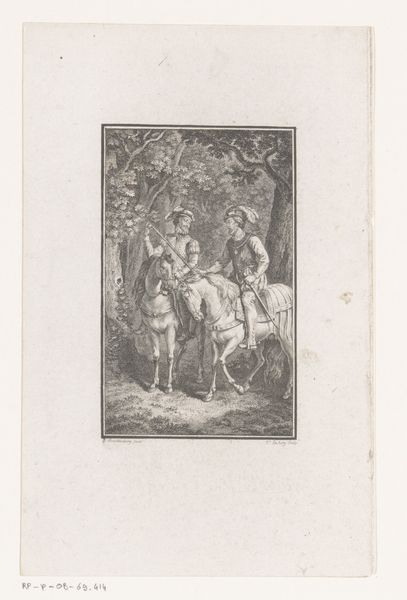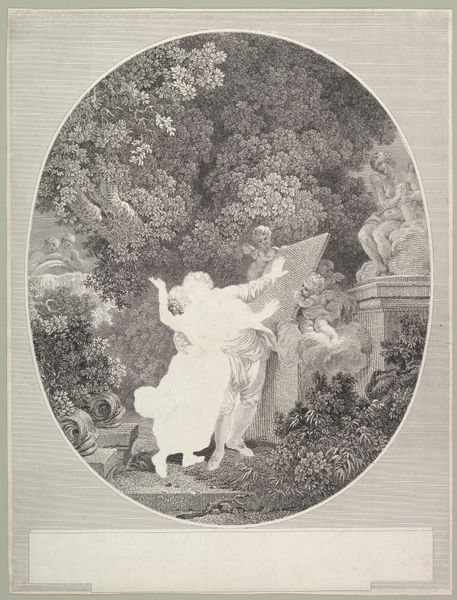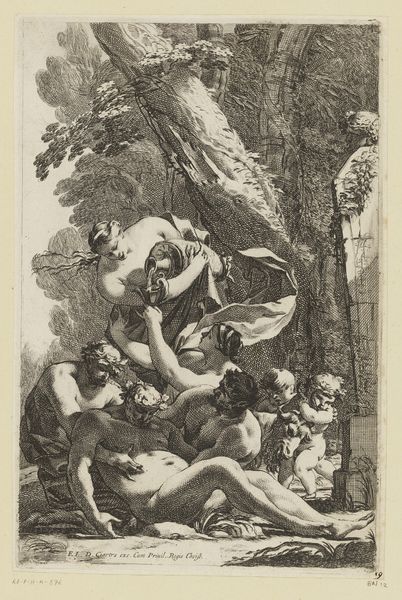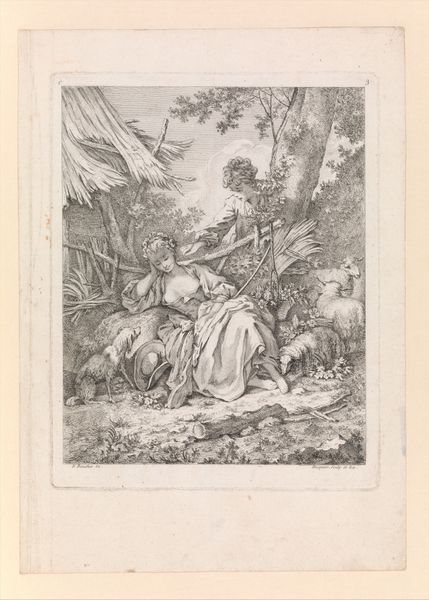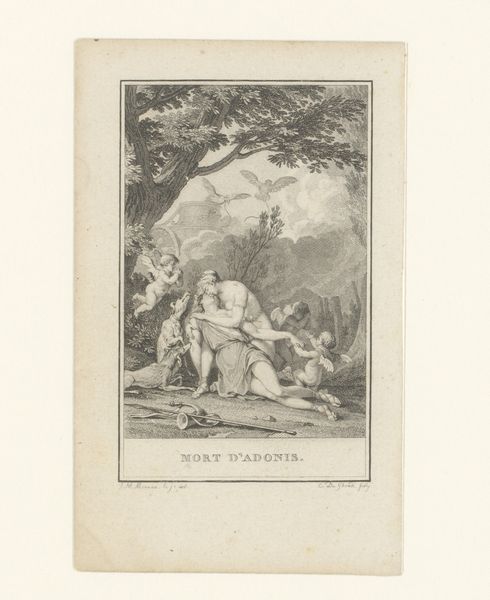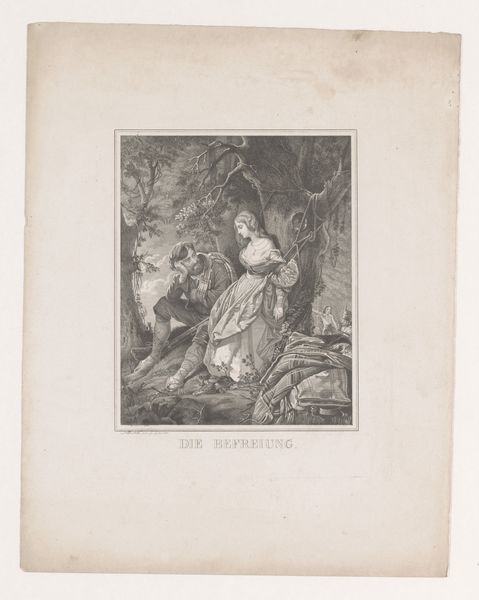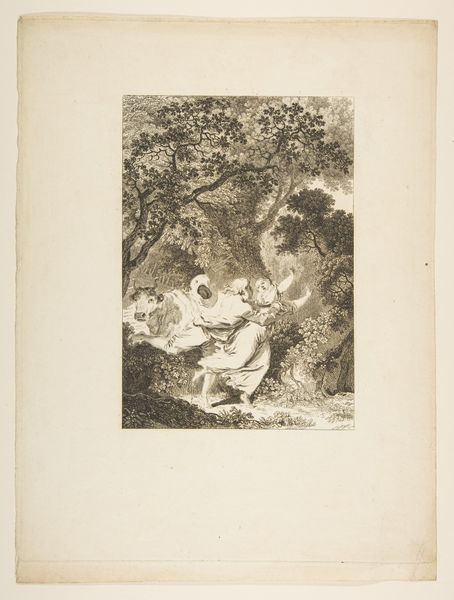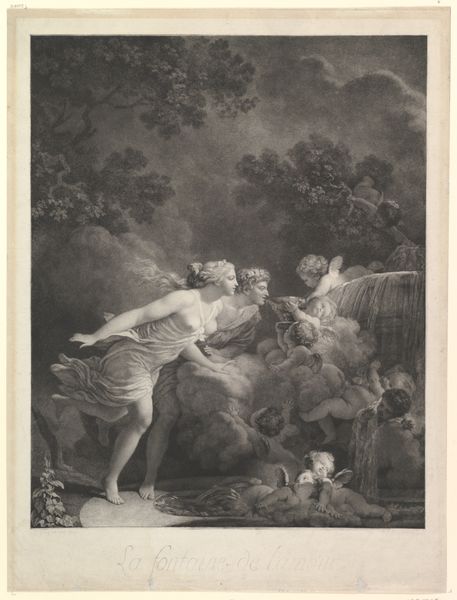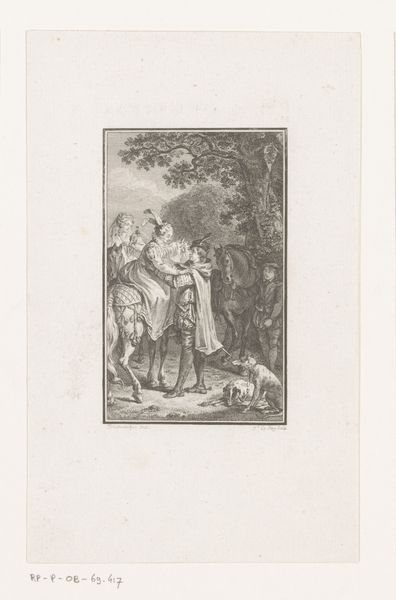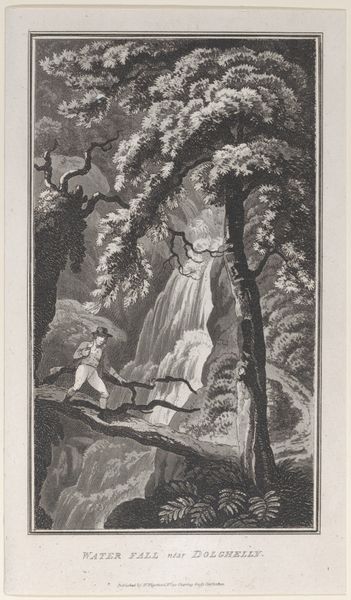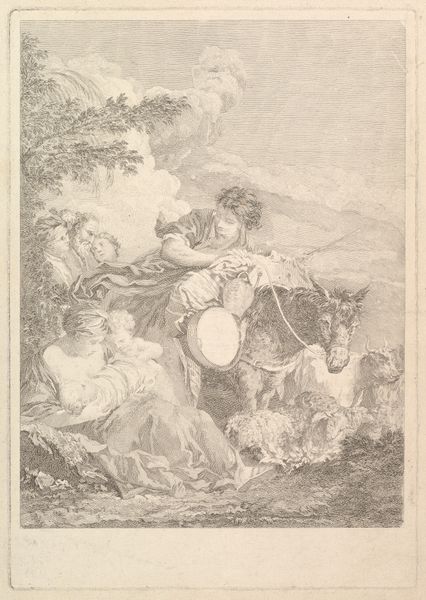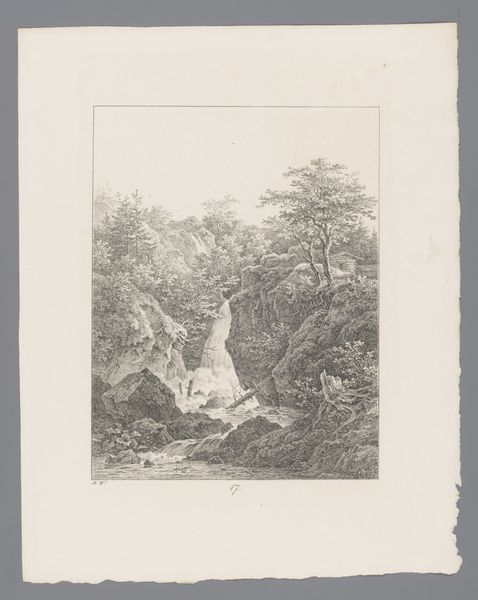
Dimensions: 16 1/16 x 12 11/16 in. (40.8 x 32.3 cm.)
Copyright: Public Domain
Curator: Here we have François-Jean Sablet’s "Satyrs Abducting Nymphs," a work from between 1755 and 1819 now residing at the Metropolitan Museum of Art. It’s rendered in ink. Editor: It’s incredibly dynamic. Even in monochrome, the swirling forms give the impression of intense movement, like a caught moment in a chaotic dance. Curator: Sablet, working within a context of evolving social and political upheaval, appropriates classical mythology to probe the established aristocratic norms surrounding gender and sexuality. What do we see here other than an abduction, right? The vulnerability of the nymphs in the clutches of the satyrs offers a critical lens through which to analyze the objectification of women in art. Editor: I'd push back slightly; I see the formal qualities of the composition orchestrating the narrative. Notice how the artist employs the tonal gradations to suggest the volume and tension in their muscles. Curator: Agreed, there's an unmistakable eroticism here, a palpable tension that is, as you say, coded and communicated by way of a classical canon but is, as well, charged with Sablet's time, his particular intersection. Look at the nymph flailing, she represents that discomfort. That fight back is itself expressive of resistance against the dominant patriarchal values embedded within the mythos. Editor: To build on that, consider the use of light; how it selectively illuminates the figures at center stage. That highlights their corporeal forms and simultaneously conceals some of the potential grotesqueness of the satyrs, softening, as it were, any truly jarring disruption. Curator: Yes, this interplay reveals how art can either uphold or subvert, right? In that the figures are rendered in fine detail; their expressions caught just so conveys meaning. Editor: Precisely. I initially focused on form and composition, but your perspectives regarding Sablet's sociopolitical commentary greatly enriched my understanding. Curator: And in turn, your focus on the purely aesthetic helped temper any possible overreach into historical-theoretical assumptions. Thank you.
Comments
No comments
Be the first to comment and join the conversation on the ultimate creative platform.
